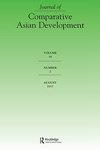股票市场对货币政策的反应:德黑兰股市的视角
Q3 Social Sciences
引用次数: 24
摘要
摘要本文利用1998年第一季度至2013年第二季度的矢量误差修正模型,评估了德黑兰股票价格对外生货币政策冲击的反应。货币政策通过货币本身、汇率和通货膨胀三种途径传导到股票市场价格。本文的研究结果表明,股票价格持续上涨是对外生宽松货币政策的反应。方差沉积结果表明,10个周期后,预测误差方差的53%以上的德黑兰证券交易所价格指数(TEPIX)可以解释为外生冲击美国dollar-Iranian里亚尔汇率,而这个比例外生冲击伊朗实际国内生产总值(gdp)仅为17%。本文认为,这样的证据可以通过内生反应占股票价格对货币政策的冲击。本文章由计算机程序翻译,如有差异,请以英文原文为准。
Response of Stock Markets to Monetary Policy: The Tehran Stock Market Perspective
Abstract The article assesses the response of Tehran stock prices to exogenous monetary policy shocks, using a vector error correction model for the 1998Q1–2013Q2 period. Monetary policy is transmitted to stock market price through three routes: money by itself, exchange rate and inflation. Our result in this paper points to the fact that stock prices increase persistently in response to an exogenous easing monetary policy. Variance deposition results show that, after ten periods, the forecast error variance of more than 53 per cent of the Tehran Stock Exchange Price Index (TEPIX) can be explained by the exogenous shocks to the US dollar–Iranian rial exchange rate, while this ratio for exogenous shocks to the Iranian real gross domestic product was only 17 per cent. The article argues that such evidence can be accounted for by an endogenous response of the stock prices to the monetary policy shocks.
求助全文
通过发布文献求助,成功后即可免费获取论文全文。
去求助
来源期刊

Journal of Comparative Asian Development
Social Sciences-Political Science and International Relations
CiteScore
1.30
自引率
0.00%
发文量
2
期刊介绍:
The Journal of Comparative Asian Development (JCAD) aims to offer the most up-to-date research, analyses, and findings on the many aspects of social, economic, and political development in contemporary Asia conducted by scholars and experts from Asia and around the world.
 求助内容:
求助内容: 应助结果提醒方式:
应助结果提醒方式:


